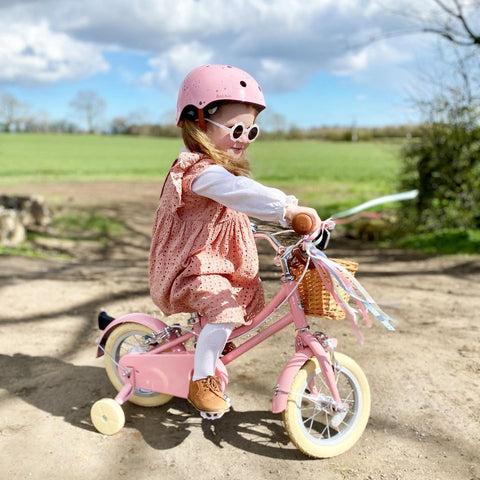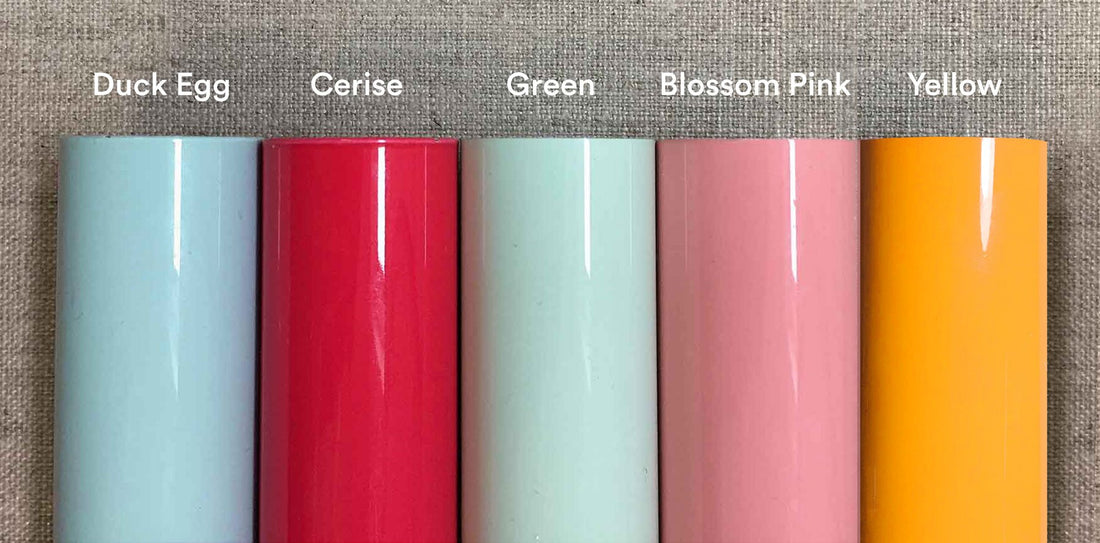Balance Bike vs Stabilisers - Which is Better
Teaching your child to ride a bike? A common dilemma for many parents has been whether to start with stabilisers or a balance bike.
Bikes with stabilisers make a great starting point. They keep the bike steady while your little ones get used to pedalling. Simple enough. But then balance bikes came along. No pedals, just scooting and steering—changing the learning curve for cycling.
Here’s what you need to know about both options before picking one.
Bikes with Stabilisers (Training Wheels)
Perhaps the most obvious way to learn to ride a bicycle is by using stabilisers. The small wheels align with the rear wheel to give extra support to someone learning to ride. Training wheels aid the bike’s balance by preventing it from leaning in the way it usually would.
Pros
-
Bikes with training wheels come with brakes. Your child can stop whenever they need to in hilly areas or when they start picking up speed. It gives you a bit more peace of mind when they go zipping off.
-
They also tend to have adjustable seats and handlebars, so the bike can grow with them. After a growth spurt, it can still be the right kids bike size. And once the stabilisers come off, they can start working on their balance without needing a new bike.
-
Children won’t stay kids forever. But the good news is, the bike might last a few more years. That means you’re not rushing out to buy a new one too soon, which saves you money in the long run.
Cons
-
When a child learns to ride with stabilisers, they rely on the bike to stay upright. In essence, they don’t know how to balance. Taking these training wheels off can be a big step. You might have to teach them how to ride all over again, without the stabilisers this time. In our experience, kids can take longer to move on to unassisted cycling with stabilisers than if they started with a balance bike (though this is not a consistent trend).
-
Plastic stabilisers can be noisy. They rattle as they move, like squeaky shoes or an old swing. It’s not the biggest issue, but it might get on your nerves if repetitive noises easily wind you up. Think squeaking shoes and a rusty swing!
-
Little wheels cannot handle rocky terrain. Bikes with stabilisers often cannot move forward if the wheels go on rough surfaces. And who can blame them—they’re only tiny!
Balance Bikes
Balance bikes have gained traction because of their simple yet effective method. With no pedals getting in the way, your child just uses their feet to push themselves along.
The more time they spend on it, the more confident they’ll get. At first, it might be slow and wobbly, but give it some time, and they’ll be whizzing along like it’s second nature.
Pros
-
Balance bikes can handle uneven terrain. With the saddle set low, your child can easily put their feet down for extra support when needed. Forget awkward riding on anything other than pavement.
-
They help kids nail the hardest part of learning to cycle: balancing. Getting that down early makes moving on to a pedal bike much easier.
-
The simple and lightweight design of balance bikes makes it easier for kids to ride them longer. They’re effortless to carry around or tuck in your car’s trunk during a family bike ride.
-
Believe it or not, kids can start riding balance bikes from as young as 18 months. That might sound pretty early compared to normal first bikes. But really, most of the knack of these bicycles is balancing and walking. If they can steady themselves and touch the ground while seated, they’re ready.
-
Balance bikes offer children independence at a remarkably young age. And the fun they have buzzing around at that age? It’s something special to see. There’s also the impact on the development of motor function, as backed up by this study.
Cons
-
Balance bikes are designed without brakes, and that’s because kids don’t really go that fast on them. One downside? Their shoes can take some beating from all the stopping with their feet.
-
They’re best for flat surfaces, so hills are a no-go. That’s fine if you live somewhere flat, like most towns and cities. But if you’re in a hilly area, it’s something to keep in mind before letting them loose.
-
Once the child is ready for pedals, an entire new bike is in order.
Decision Time!
There’s no wrong choice here, as both types of kids’ bikes have helped plenty of children learn to ride. That should make picking one easier, right? But we get it, it’s still tricky. So, try asking yourself a few simple questions to figure out what suits you and your child best:
-
What do you want them to learn first: pedalling or balancing?
-
Is where you live mostly flat, or are there lots of hills?
-
How early do you want to get them cycling?
-
How long do you want the bike to last?
-
Do you want them to stick close by or explore more freely?
-
Will they be riding on smooth paths or rough, bumpy ground?
Hopefully, that helps make the decision a bit clearer. When you’re ready, click here to check out our toddler bikes for 2-year-olds.
Up next on your reading list: Teach Your Kid How to Ride a Balance Bike










